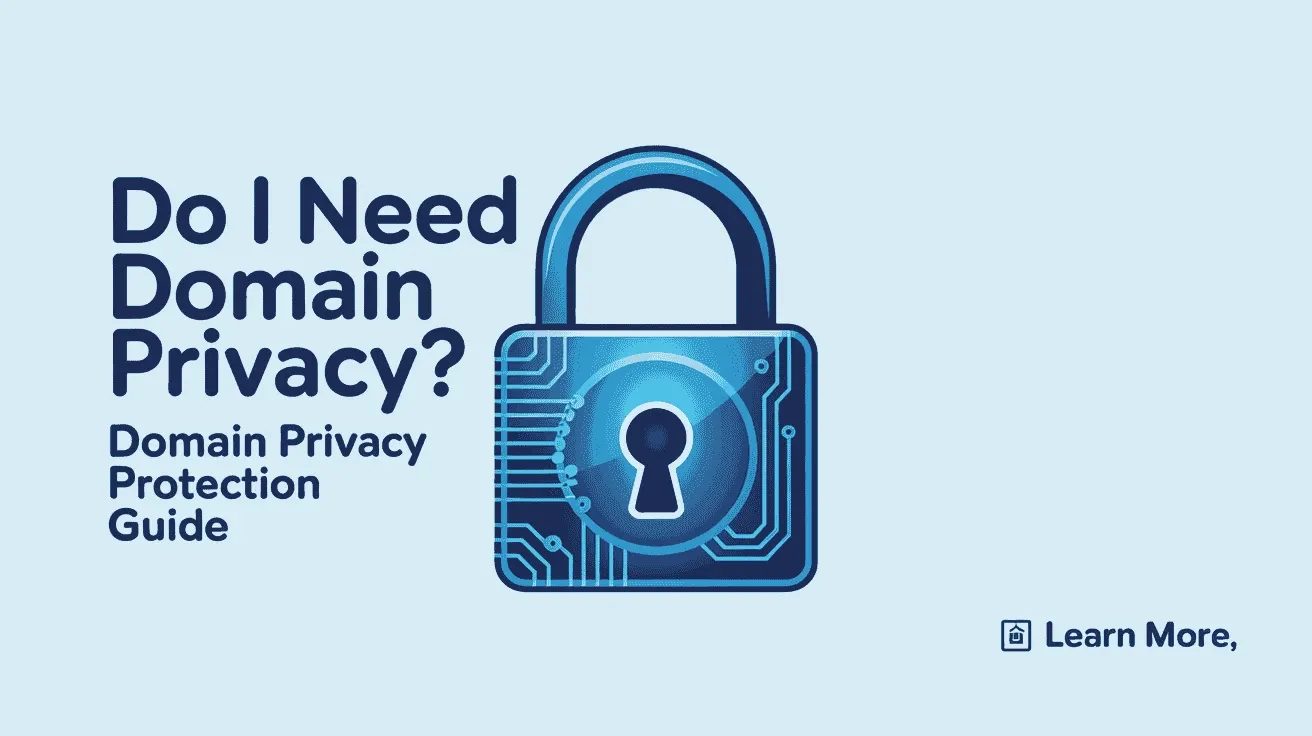Domain Name Security is more important than ever in 2025. As cyber threats grow, both individuals and businesses need to be extra careful. Your domain name is like your website’s address—it helps people find you online. But hackers and scammers often try to steal or misuse domain names to trick users. If your domain gets hacked, it can lead to big problems like losing money, damaging your reputation, or even facing legal trouble.
That’s why it’s so important to improve your domain security. In this guide by Owrbit, we’ll show you simple and smart ways to protect your domain. You’ll learn how to use strong passwords, enable extra protection like two-factor authentication, and keep an eye on domain activity. All of these steps can help you improve your domain security and keep your website safe.
Domain Name Security helps you stop phishing, domain hijacking, and other online attacks. If you run a website, blog, or business online, you need to take domain name security seriously. By following the tips in this guide, you can improve your domain security and make sure your users and customers stay safe.
We’ll cover expert advice, easy-to-use tools, and practical steps you can take today to improve your domain security. Don’t wait until it’s too late—take control now. Keep reading to learn how domain name security can protect your online presence in 2025 and beyond.
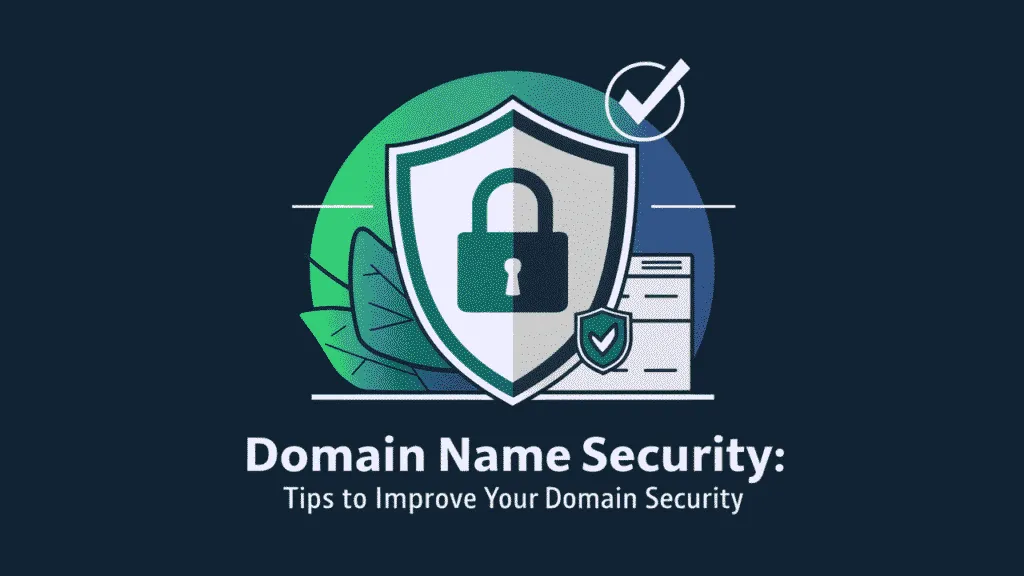
What is Domain Name Security?
Domain name security refers to the protection of your domain name—the web address people use to visit your website (like example.com)—from being accessed, hacked, or misused by cybercriminals.
Your domain name is an important part of your online identity. If someone gets control over your domain, they can:
- Redirect your visitors to fake or harmful websites
- Steal customer data
- Take down your website
- Send spam or scam emails using your domain
- Harm your reputation and search engine rankings
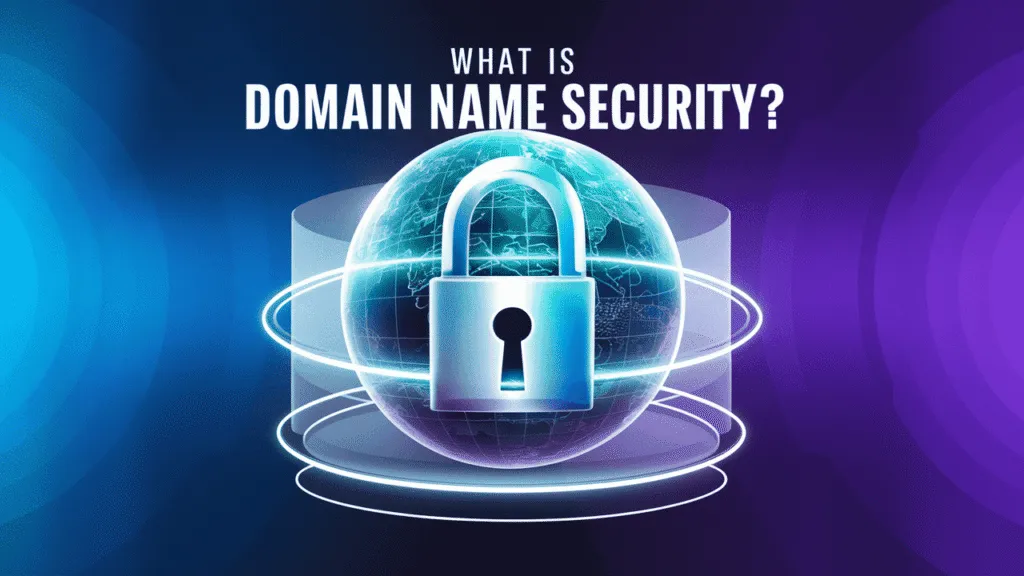
Domain name security means taking steps to stop these kinds of attacks. To improve your domain security, you can:
- Lock your domain using a registrar lock
- Turn on two-factor authentication (2FA)
- Use DNSSEC (Domain Name System Security Extensions)
- Keep your domain contact details private
- Watch for any suspicious changes to your domain settings
- Regularly update your passwords and login info
In simple terms, domain name security helps you improve your domain security, protect your business, and keep your website safe for users. Taking the right steps today will give you peace of mind and a stronger online presence.
Why is Domain Name Security Important in 2025?
In 2025, domain name security is more important than ever. As the internet grows, so do cyber threats. Hackers and scammers are constantly looking for ways to take control of domain names. If they succeed, they can damage your business, steal customer information, or even shut down your website.

Your domain name is like your online address. It’s how customers find you and trust your brand. If someone takes over your domain, they can:
- Redirect users to fake or harmful websites
- Collect sensitive data through phishing
- Harm your search engine ranking
- Send spam or scam emails in your name
- Ruin your brand’s image and customer trust
That’s why you must improve your domain security. With more phishing attacks, domain hijacking, and online fraud happening every day, protecting your domain is not optional—it’s necessary.
By focusing on domain name security in 2025, you’re not just protecting your website. You’re also keeping your customers safe, maintaining trust, and protecting your entire online presence.
Taking the right steps now to improve your domain security can save you from serious problems later. It’s a smart and essential move for anyone running a website.
Common Threats to Domain Name Security :
Understanding the common threats to domain name security is the first step to protecting your website. In 2025, cybercriminals are smarter and faster, and they often target domain names to cause damage or steal valuable data. Here are some of the most common threats:
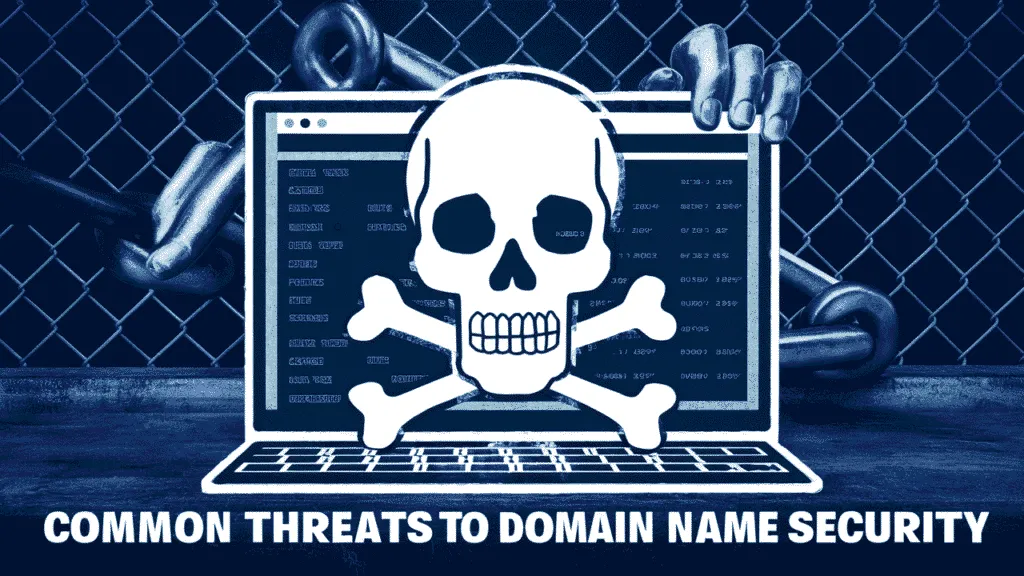
- 1. Domain Hijacking
- This happens when someone illegally gains access to your domain control panel and takes over your domain. They can redirect it, transfer it, or lock you out completely.
- 2. Phishing Attacks
- Hackers may use similar-looking domain names (like g00gle.com instead of google.com) to trick users into giving up sensitive information like passwords or credit card details.
- 3. DNS Spoofing (Cache Poisoning)
- In this attack, the hacker manipulates DNS records to redirect traffic from your domain to a malicious website without changing the domain itself.
- 4. Expired Domain Abuse
- If you forget to renew your domain, someone else can buy it and misuse it. They might create a fake version of your website or sell it back to you at a high price.
- 5. Registrar Account Hacking
- If someone gains access to your domain registrar account (where your domain is managed), they can change your domain settings or transfer it to another registrar.
- 6. WHOIS Data Exposure
- If your personal or business contact information is public in the WHOIS database, it can be used by scammers for targeted attacks or spam.
- 7. Weak or Reused Passwords
- Using simple or repeated passwords makes it easy for hackers to break into your domain account using brute-force attacks or stolen credentials.
By understanding these threats, you can take the right steps to improve your domain security and keep your online presence safe.
Best Practices to Improve Your Domain Security :
Want to keep your domain safe from hackers and scams? Follow these 8 best practices to improve your domain security in 2025:
Checkout How Much Does it Cost to Build a Website in India in 2025?

1. Use Strong and Unique Passwords :
Using a strong and unique password is the first and most basic step to improve your domain security.
Avoid easy passwords like “123456” or “admin123.” Instead, create a password that includes:
- Uppercase and lowercase letters
- Numbers
- Special symbols (like @, #, $, %)
- At least 12 characters
Also, never reuse passwords from other websites or accounts. If one account gets hacked, others using the same password can be easily compromised.
Tips:
- Use a password manager to safely store and generate strong passwords.
- Change your domain registrar password regularly.
- Don’t share your password with anyone you don’t fully trust.
A strong password is your first defense to improve your domain security and keep hackers out of your domain control panel.
2. Enable Two-Factor Authentication (2FA) :
Two-Factor Authentication (2FA) adds an extra layer of security to your domain account. Even if someone guesses your password, they won’t be able to log in without the second step of verification.
With 2FA, after entering your password, you’ll need to:
- Enter a code sent to your mobile number or email, or
- Approve the login through an app like Google Authenticator or Authy
This simple step can block most hacking attempts.
Tips:
- Always enable 2FA on your domain registrar account and email linked to your domain.
- Use an authenticator app instead of SMS when possible (it’s safer).
- Keep backup codes in a safe place in case you lose your phone.
Enabling 2FA is one of the easiest and most effective ways to improve your domain security.
3. Keep Your Domain Locked :
A domain lock (also called Registrar Lock) prevents anyone from transferring your domain to another registrar without your permission. It’s like putting a safety lock on your domain.
If your domain is unlocked, a hacker could trick your registrar into transferring the domain away — this is called domain hijacking.
Tips:
- Log in to your domain registrar account and make sure your domain is locked.
- Only unlock your domain when you need to make changes (like transferring it), then lock it again immediately.
- Many registrars offer this feature for free — use it!
Keeping your domain locked is a small step, but it can seriously improve your domain security and protect your online identity from unauthorized transfers.
4. Set Up DNSSEC (Domain Name System Security Extensions)
DNSSEC is a security feature that protects your domain’s DNS (Domain Name System) from being tampered with. DNS is what connects your domain name (like example.com) to your website’s server.
Without DNSSEC, hackers can trick users into visiting a fake version of your site by changing your DNS records — this is called DNS spoofing.
DNSSEC adds a digital signature to your DNS records, helping users reach the real and safe version of your website.
Tips:
- Ask your domain registrar or hosting provider if they support DNSSEC.
- Enable DNSSEC from your domain settings or contact support to set it up.
- After enabling, test it using online tools like DNSViz or Verisign DNSSEC Debugger.
Using DNSSEC is a smart way to improve your domain security and protect your visitors from fake or dangerous websites.
5. Use WHOIS Privacy Protection :
When you register a domain, your personal details (like name, email, phone number, and address) are stored in a public database called WHOIS.
Without privacy protection, anyone—including hackers and spammers—can see your contact info. This can lead to:
- Spam emails and scam calls
- Targeted phishing attacks
- Identity theft or social engineering
WHOIS privacy protection hides your personal information and shows the domain registrar’s generic contact instead.
Tips:
- Most domain registrars offer WHOIS privacy for free or a small fee — turn it on.
- Make sure your registrar is ICANN-accredited and supports privacy protection.
- If your domain is registered to a business, you can still protect key personal contacts.
Using WHOIS privacy protection is an easy way to improve your domain security and keep your personal data safe from attackers.
6. Monitor Your Domain Activity :
Regularly monitoring your domain activity helps you catch any suspicious changes early — before real damage is done. Hackers often make small edits (like changing DNS settings or contact info) to slowly take over your domain.
If you’re not keeping an eye on your domain, you might not notice these changes until it’s too late.
Tips:
- Check your domain control panel weekly for any changes to DNS, name servers, or contact info.
- Set up email alerts (if your registrar allows it) for changes made to your domain.
- Use domain monitoring tools or services that notify you about suspicious activity.
Monitoring your domain is like checking the locks on your doors — it’s simple and helps you improve your domain security by staying alert and in control.
7. Renew Your Domain on Time :
Forgetting to renew your domain can be a major risk. If your domain expires, anyone can buy it — including competitors, scammers, or domain resellers. They can misuse it or demand a high price to give it back.
Losing your domain can mean losing your entire website, emails, SEO rankings, and customer trust.
Tips:
- Turn on auto-renewal in your domain registrar account.
- Keep your payment method up to date so renewal doesn’t fail.
- Set reminders a few weeks before your domain expires.
- Consider renewing your domain for multiple years in advance for peace of mind.
Renewing on time is one of the simplest ways to improve your domain security and avoid unnecessary stress or loss.
8. Register Your Domain with a Trusted Registrar :
Not all domain registrars are equal. Some have weak security, poor customer support, or hidden policies that put your domain at risk.
Choosing a trusted and reliable registrar helps you get better protection, faster support, and more features to manage your domain safely.
Tips:
- Choose a registrar that is ICANN-accredited.
- Look for features like 2FA, DNSSEC support, domain lock, and WHOIS privacy.
- Check online reviews and compare customer support quality.
- Avoid very cheap or unknown registrars just to save money — security matters more.
Registering your domain with a trusted registrar is a smart way to improve your domain security and ensure your website stays protected in the long run.
🔒 Why Owrbit Is a Secure Choice as Domain Registrar :
If you’re serious about domain name security in 2025, Owrbit is one of the best options. Here’s why Owrbit is a trusted and secure domain registrar to improve your domain security:
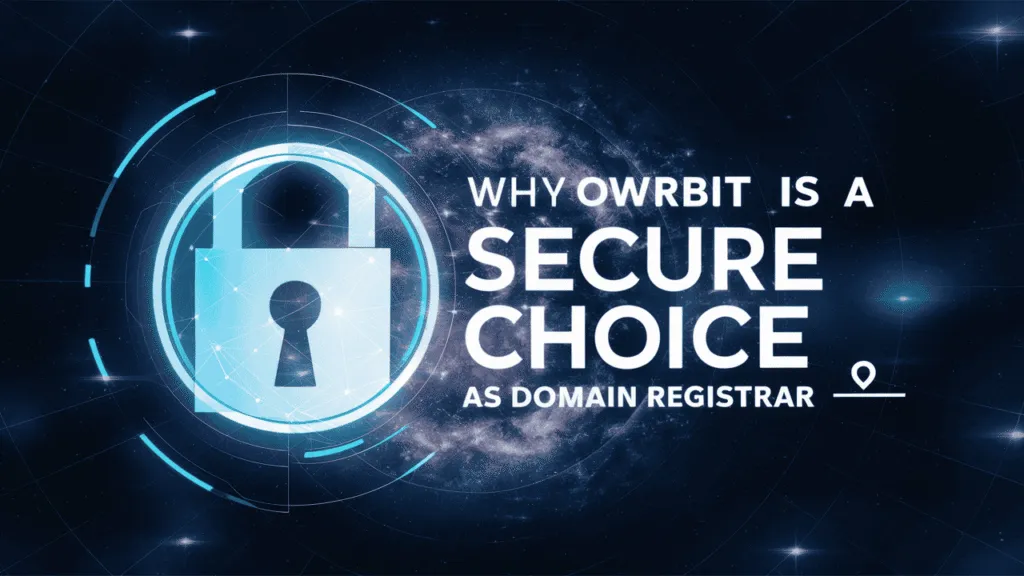
- Free WHOIS Privacy Protection
- Owrbit hides your personal contact info from the public WHOIS directory, reducing spam, phishing attempts, and identity risks.
- Easy & Effective Domain Management
- You can handle DNS settings, name servers, renewals, and more within their portal—making it simpler to keep everything secure and up to date.
- Support for Security Essentials
- Owrbit offers domain lock functionality, two-factor authentication (2FA), and DNSSEC—core features that protect your domain from hijacking, unauthorized transfers, and DNS spoofing.
- Strong Hosting Security
- As a full-service provider, Owrbit also includes free SSL certificates, automatic backups, 99.9 % uptime, and daily backups—adding extra layers of protection around your domain and website.
- Positive User Feedback
- Users rate Owrbit highly (4.6–4.9/5) for reliability, support, and speed, reflecting its trustworthy infrastructure and commitment to customer service.
- 24/7 Customer Support
- Around-the-clock specialist support means swift resolution to security issues, and help with enabling important features like domain lock and 2FA.
Owrbit is a strong choice if you want to improve your domain security in a practical, secure way. From privacy protection and DNS management to advanced security tools and reliable support, it offers essential defenses for your domain name.
📝 How to Register a Domain Name with Owrbit :
Registering a domain name with Owrbit is quick, easy, and secure. Follow these simple steps to get started and improve your domain security:
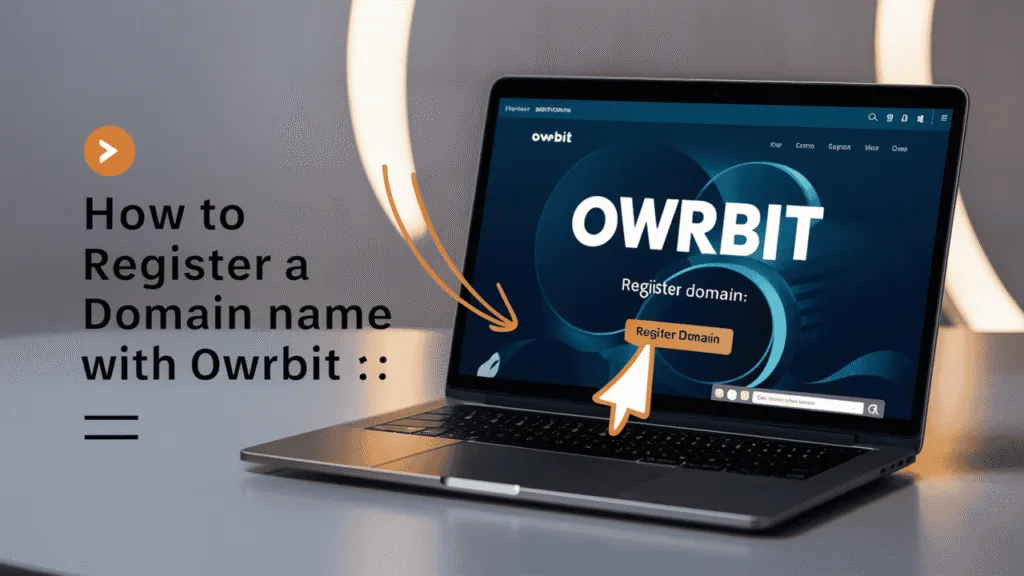
- ✅ Step 1: Visit Owrbit’s Website
- Go to the official website: owrbit.com
- ✅ Step 2: Search for Your Domain
- Use the domain search bar on the homepage.
- Enter your desired domain name (e.g.,
yourbrand.com) and click Search to check availability.
- ✅ Step 3: Choose and Add to Cart
- If the domain is available, click Add to Cart.
- You can also explore other extensions like
.in,.net,.org, etc., if.comis taken.
- ✅ Step 4: Create or Log into Your Owrbit Account
- Sign up for a new account or log in with your existing Owrbit credentials.
- ✅ Step 5: Select Add-ons (Optional but Recommended)
- Enable WHOIS Privacy Protection (often free)
- Add hosting if needed
- Choose auto-renew to keep your domain secure.
- ✅ Step 6: Make Payment
- Owrbit accepts various payment methods including UPI, Paytm, cards, and net banking.
- Complete the payment to finalize your domain registration.
- ✅ Step 7: Access Your Domain Dashboard
- After payment, your domain will be active. You can manage DNS, enable domain lock, activate DNSSEC, and improve your domain security directly from your Owrbit account dashboard.
Conclusion: The Importance of Proactive Domain Security
Taking Domain Name Security seriously is more important than ever. Your domain name is the foundation of your online identity. If it gets hacked, hijacked, or misused, you could lose your website, your business reputation, and the trust of your users.
That’s why it’s essential to take proactive steps to improve your domain security. You shouldn’t wait for a problem to happen. Instead, follow the best practices we’ve shared — like using strong passwords, enabling 2FA, locking your domain, and setting up DNSSEC. These simple actions can protect your domain from cyber threats.
Whether you’re a blogger, small business owner, or running a large company, Domain Name Security is something you can’t ignore. When you actively work to improve your domain security, you’re not just protecting a web address — you’re protecting your brand, your customers, and your future.
By choosing a trusted registrar like Owrbit and using all the available security features, you can greatly enhance your Domain Name Security. So take action today. Make it a habit to improve your domain security regularly and stay ahead of the risks.
In 2025 and beyond, strong Domain Name Security isn’t optional — it’s necessary. Stay smart, stay safe, and always work to improve your domain security at every step.
Checkout How Much Does it Cost to Build a Website in India in 2025?
Discover more from Owrbit
Subscribe to get the latest posts sent to your email.






